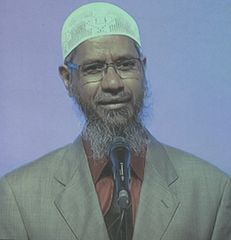The true impetus for religious conversion will remain contested, and in all probability, it may never be established one way or the other, for the reality lies somewhere in between. By Arpita Anant, Research Scholar, Jawaharlal Nehru University, New Delhi. This article appeared in The Hindu, Dec 17, 2002.
THE RECENT controversy concerning the enactment of the anti-conversion law in Tamil Nadu was characterised by two kinds of reactions. On the one hand there were those who proposed and voted for the legislation for political gains combined with concern that in the absence of such a law, `forcible' conversions would go unnoticed and unpunished. The opposing camp consisted of those belonging to minority communities who felt that such legislation was aimed at restricting the right to propagate religion, which is guaranteed by Article 25 of the Constitution. While these reactions tend to polarise masses of the communities concerned in particular instances, what is at stake here is the nature of Indian democracy, which provides the larger context for these arguments. It is therefore worth our while, whether we belong to the majority or the minority community, to ponder the issue historically, before we consolidate our opinions.
Legislative history
The legislative history relating to the issue of conversion in India underscores the point that the authorities concerned were never favourably disposed towards conversion. While British India had no anti-conversion laws, many Princely States enacted anti-conversion legislation: the Raigarh State Conversion Act 1936, the Patna Freedom of Religion Act of 1942, the Sarguja State Apostasy Act 1945 and the Udaipur State Anti-Conversion Act 1946. Similar laws were enacted in Bikaner, Jodhpur, Kalahandi and Kota and many more were specifically against conversion to Christianity. In the post-independence era, Parliament took up for consideration in 1954 the Indian Conversion (Regulation and Registration) Bill and later in 1960 the Backward Communities (Religious Protection) Bill, both of which had to be dropped for lack of support. The proposed Freedom of Religion Bill of 1979 was opposed by the Minorities Commission due to the Bill's evident bias.
However, in 1967-68, Orissa and Madhya Pradesh enacted local laws called the Orissa Freedom of Religion Act 1967 and the Madhya Pradesh Dharma Swatantraya Adhiniyam 1968. Along similar lines, the Arunachal Pradesh Freedom of Religion Act, 1978 was enacted to provide for prohibition of conversion from one religious faith to any other by use of force or inducement or by fraudulent means and for matters connected therewith. The latest addition to this was the Tamil Nadu Prohibition of Forcible Conversion of Religion Ordinance promulgated by the Governor on October 5, 2002 and subsequently adopted by the State Assembly. Each of these Acts provides definitions of `Government', `conversion', `indigenous faith', `force', `fraud', `inducement' (and in the case of Arunachal, that of `prescribed and religious faith'). These laws made forced conversion a cognisable offence under sections 295 A and 298 of the Indian Penal Code that stipulate that malice and deliberate intention to hurt the sentiments of others is a penal offence punishable by varying durations of imprisonment and fines.
As early as 1967, it became evident that the concern was not just with forced conversion, but with conversion to any religion other than Hinduism and especially Christianity and Islam. In the Orissa and Madhya Pradesh Acts, the punishment was to be doubled if the offence had been committed in respect of a minor, a woman or a person belonging to the Scheduled Caste or Scheduled Tribe community. These may be seen as further reinforcing the several statutory penalties for ceasing to be a Hindu such as the 1955-56 Hindu Law enactments namely Hindu Minority and Guardianship Act 1956 (Section 6), Hindu Adoption and Maintenance Act 1956 (Sections 7, 8, 9, 11, 18-24), Hindu Marriage Act 1955 (Sections 13 (ii), 13 A) and the Hindu Succession Act (section 26). The picture is complete if we account for the fact that most of these laws are aimed to keep the low caste Hindus within the fold of Hinduism. And so while law prohibits conversion, `reconversion' of low caste Hindus is permissible. If a low caste Hindu who had converted to another faith or any of his descendants reconverts to Hinduism, he might get back his original caste (Kailash Sonkar (1984) 2 SCC 91; S. Raja Gopal AIR 1969 SC 101).
Meaning of propagation
In a prominent case challenging the validity of the Madhya Pradesh and Orissa Acts, Chief Justice A.N. Ray in Reverend Stainislaus v. State of Madhya Pradesh (AIR 1977 SC 908) and Yulitha v. State of Orissa and others ruled that propagation is different from conversion. Adoption of a new religion is freedom of conscience, while conversion would impinge on `freedom of choice' granted to all citizens alike. After examining the different meanings of the word "propagate" in Article 25(1), Justice Ray expressed the view that "what Article 25(1) grants is not the right to convert another person to one's own religion by exposition of its tenets." On the question of legislative competence, the court was of the opinion that since any attempt at conversion was likely to result in a breach of public order affecting the community at large, the State legislatures would have the competence to enact legislation which is likely to avoid disturbances to the public order by prohibiting conversion from one religion to another in a manner reprehensible to the conscience of the community.
Commenting on this judgement, Justice P. Jaganmohan Reddy opined that since the court did not comment on the definitions in the two Acts of the expressions, namely, allurement, fraud, force, inducement, fraudulent means, etc., it was not possible to say whether these definitions affected the fundamental rights of the minorities to propagate their religion. Moreover, the court significantly overlooked the freedom of religion of the person getting converted. Conversion is equally the right of the person who is sought to be converted, as such it is of no consequence to him if it is not a part of the freedom of propagation of the religious group to which conversion is made, provided he is not subjected to force/fraud and inducement. In the aftermath of the Meenakshipuram conversion of February 1981, the Ministry of Home Affairs, Government of India, is reported to have advised the State Governments and Union Territory administrations to enact laws to regulate change of religion on the lines of the existing Acts in Madhya Pradesh, Orissa and Arunachal Pradesh (The Statesman, Delhi, November 16, 1982). Let us keep in mind that the ruling party then was not the BJP, but the Congress (I).
Arguments of use of force and the indelible `foreign hand' in the conversion of low caste and poor people have been the impetus behind such enactments. In the case of the much agonised over Meenakshipuram conversion, the Home Ministry presented evidence of the extent of foreign support to these conversions. However there were several reports including one by the Regional Director of the SC/ST Federation that this conversion was a protest against the humiliation of untouchability suffered by the community. In Madhya Pradesh, one of the States in which the anti-conversion had been enacted decades ago, two priests and a nun were sentenced to imprisonment on the charge of forcible conversion by a Raigarh court. This despite a written communication sent to the District Magistrate, the SDM and the SO (Police) claiming they had changed their religion voluntarily and without any allurement (TOI, August 22, 2002). How valid are these concerns if
it is true that in both Madhya Pradesh and Orissa, not a single case had been framed under this Act for more than three decades (Walter Fernandes, The Hindu, November 10, 1999). The true impetus for religious conversion will remain contested, and in all probability, it may never be established one way or the other, for the reality lies somewhere in between.
Humiliating conditions
Whereas in the 1980s the concern was over conversion to Islam, conversions to Christianity have been the source of worry in the 1990s. Yes, forced conversions are wrong. (And in some cases the converts have admitted to ridiculous logic of conversion given to them). But, what is worse is forcing masses of people to accept their humiliating conditions without protest, when they seem to have made a conscious decision to opt out of the Hindu fold as a form of symbolic protest.
The BJP's election manifesto in Gujarat speaks of enacting a similar law in the State that has now become infamous for its persecution of Christian and Muslim minorities. In a democracy, the majority will inevitably benefit from the principle of `majority rule.' What we hope for are discerning majorities, who will vote and strive for meaningful democracy.
Original Source: http://www.hinduonnet.com/thehindu/op/2002/12/17/stories/2002121700110200.htm
FAIR USE NOTICE BY SAKSHI
This article is a copyrighted material the use of which has not been specifically authorized by the copyright owner. We believe this constitutes a 'fair use' of any such copyrighted material as provided for in section 52 of the Indian Copyright Law. In accordance with Title CHAPTER XI: Infringement of Copyright, section 52 the material on this site is distributed without profit to those who have expressed a prior interest in receiving the included information for research and educational purposes. For more information go to: http://copyright.gov.in/CprAct.pdf. If you wish to use copyrighted material from this update for purposes of your own that go beyond 'fair use', you must obtain permission from the copyright owner.
We will remove this article from our website if the author or publication has objection to us posting this content on our website. Please provide us with the URL of the item.
{moscomment}





Hi there, I dont know if I am writing in a proper board but I have got a problem with activation, link i receive in email is not working… http://www.sakshitimes.org/?22e107f3b7b713a0efc292f23cf,